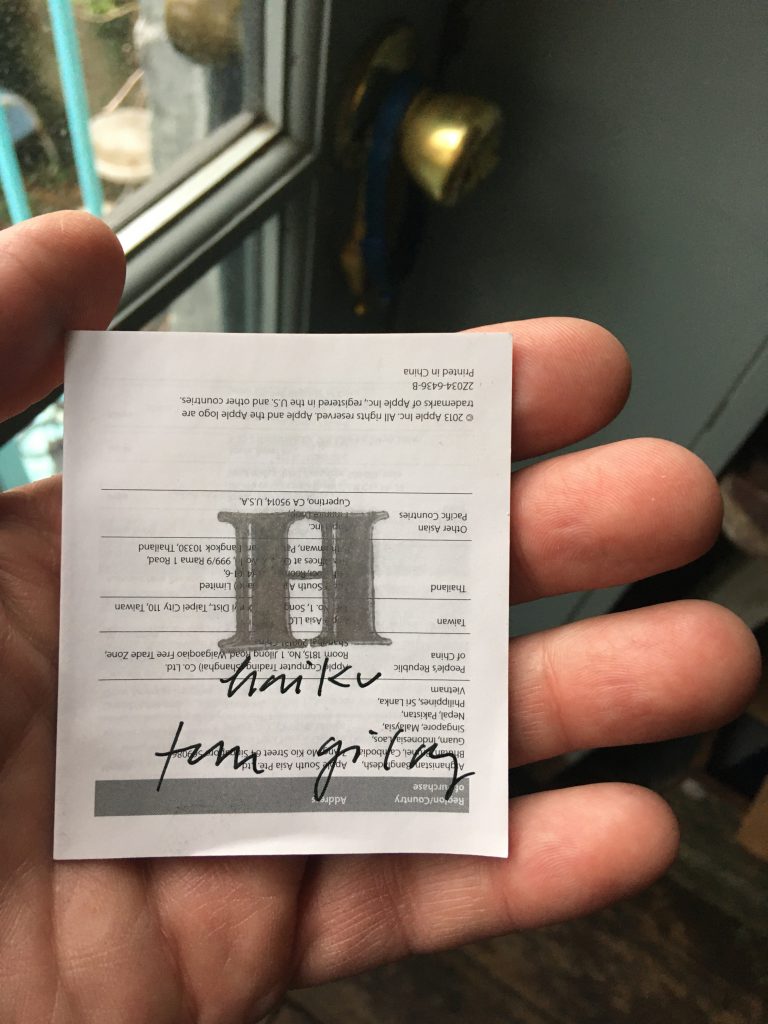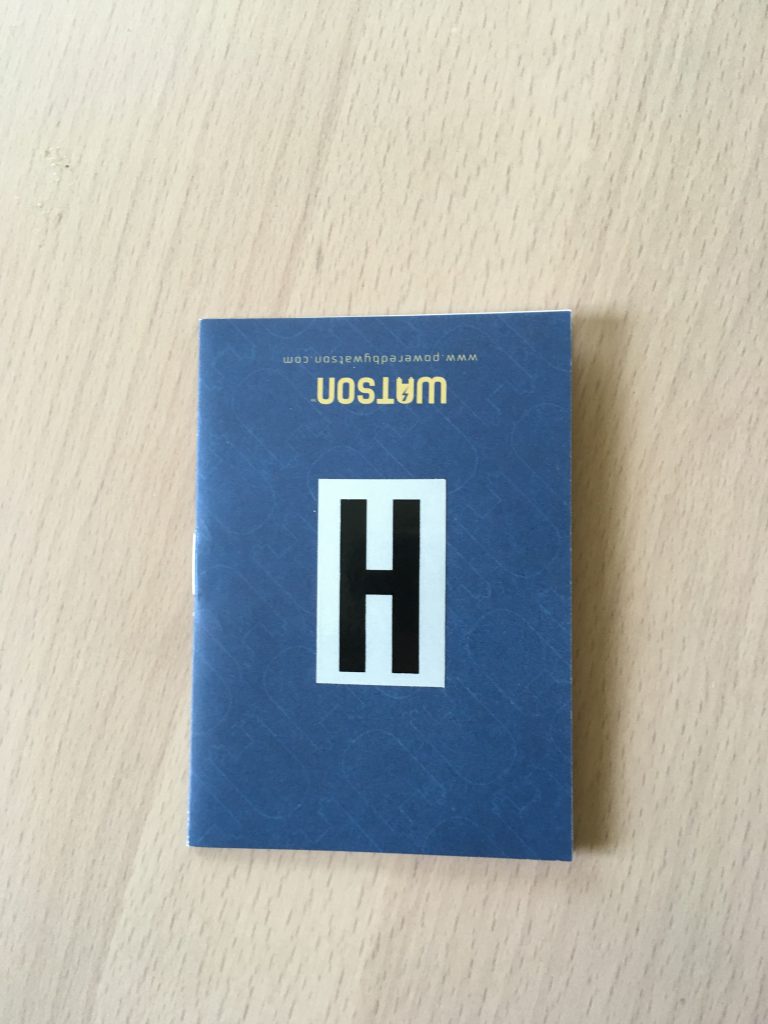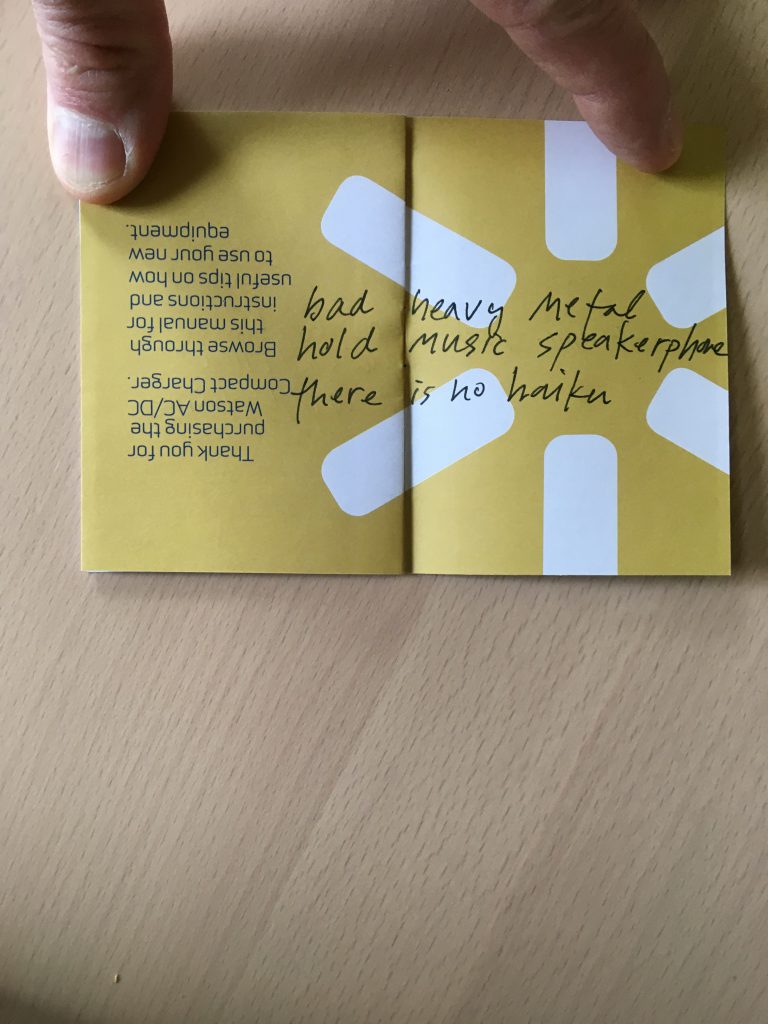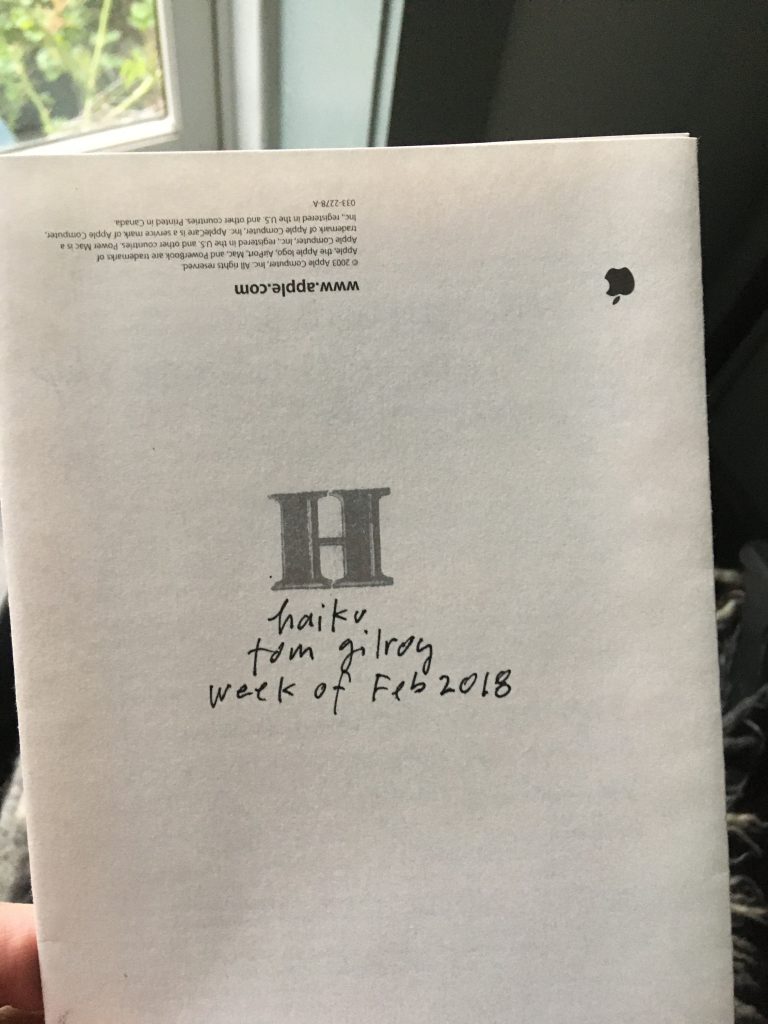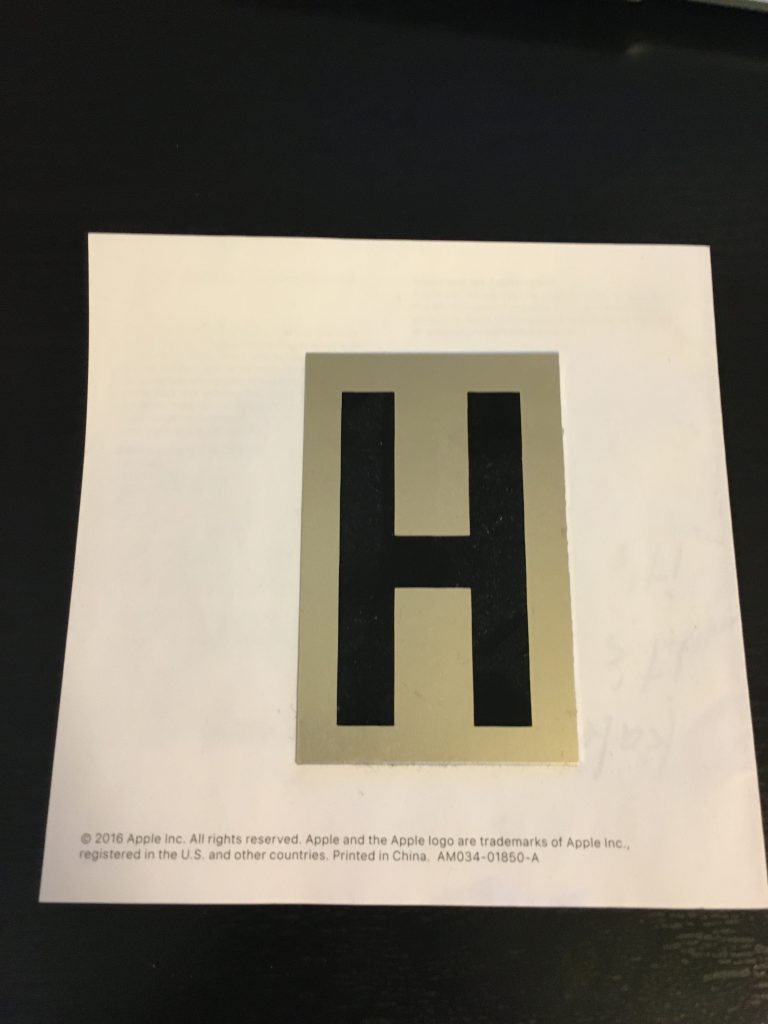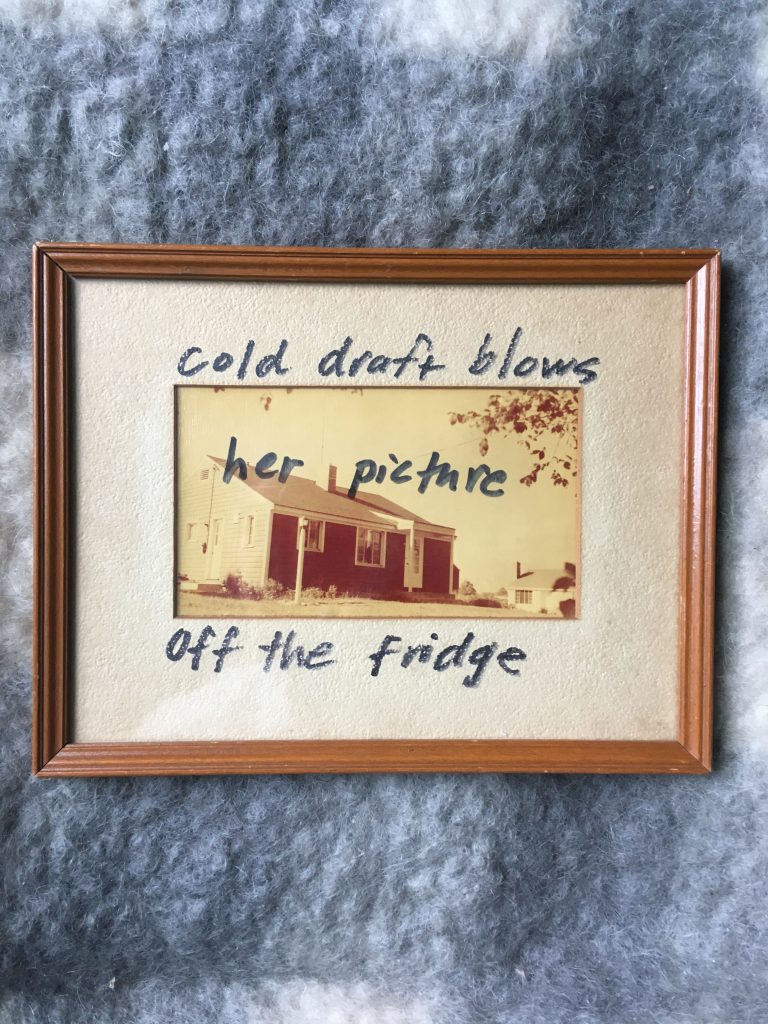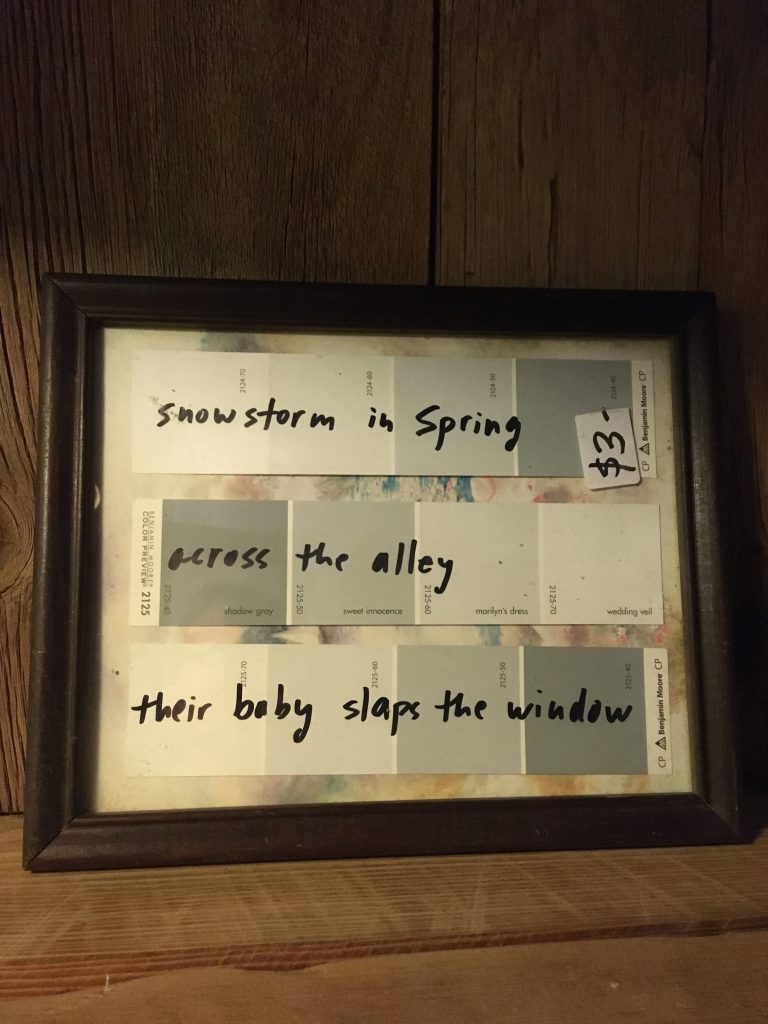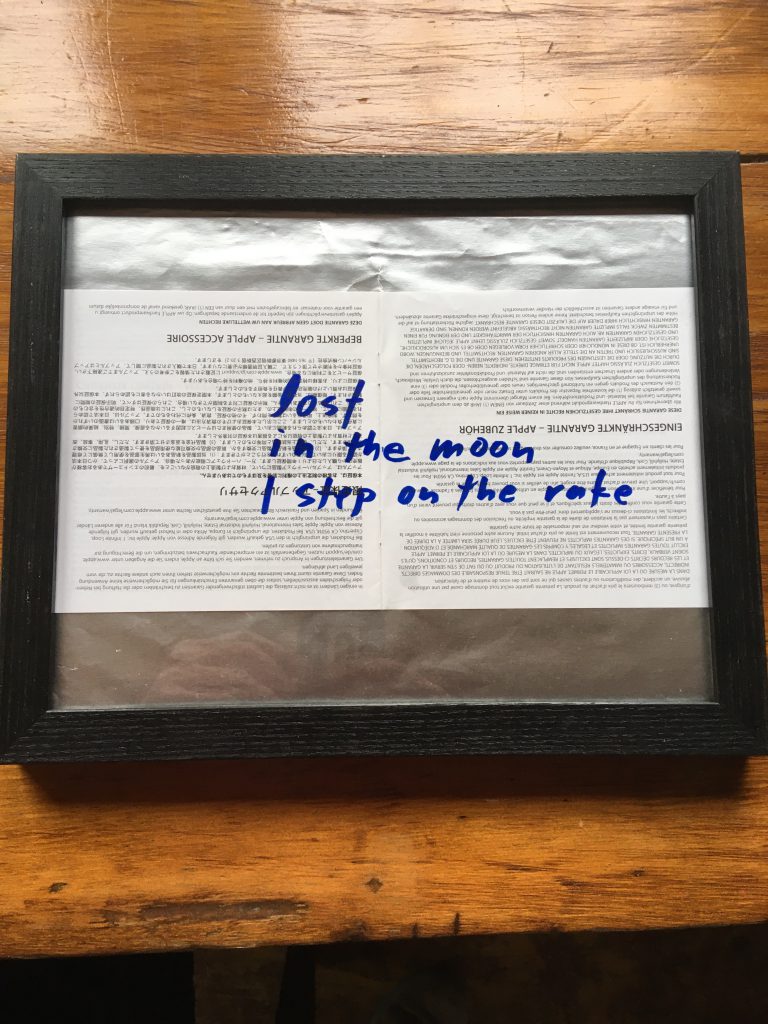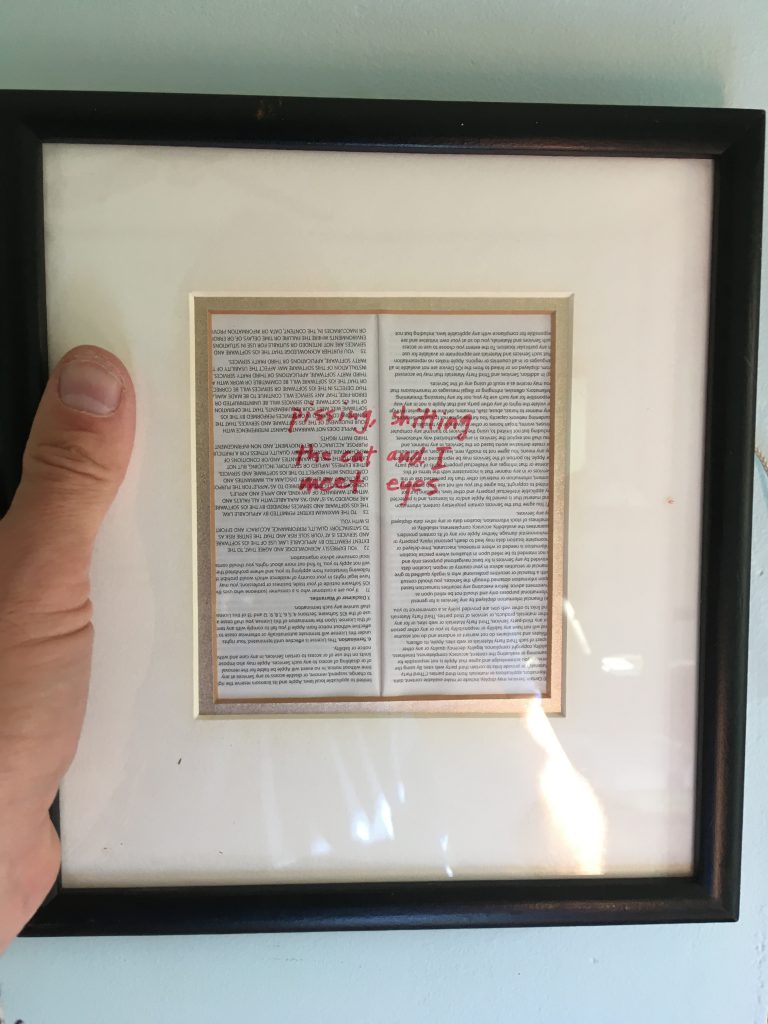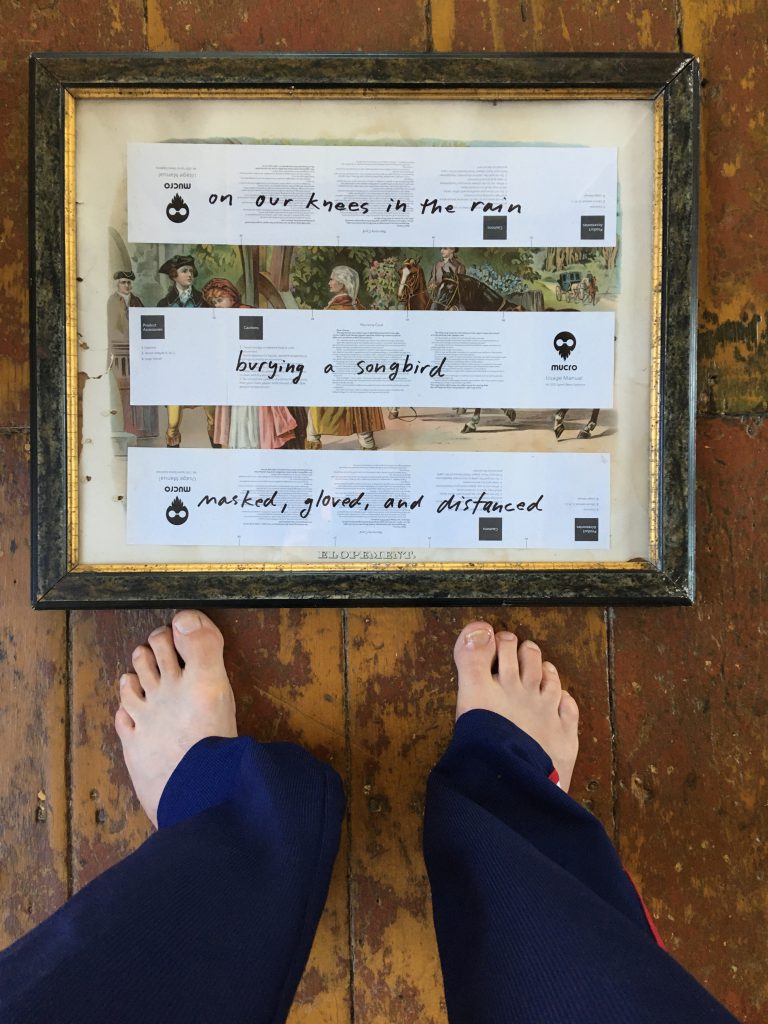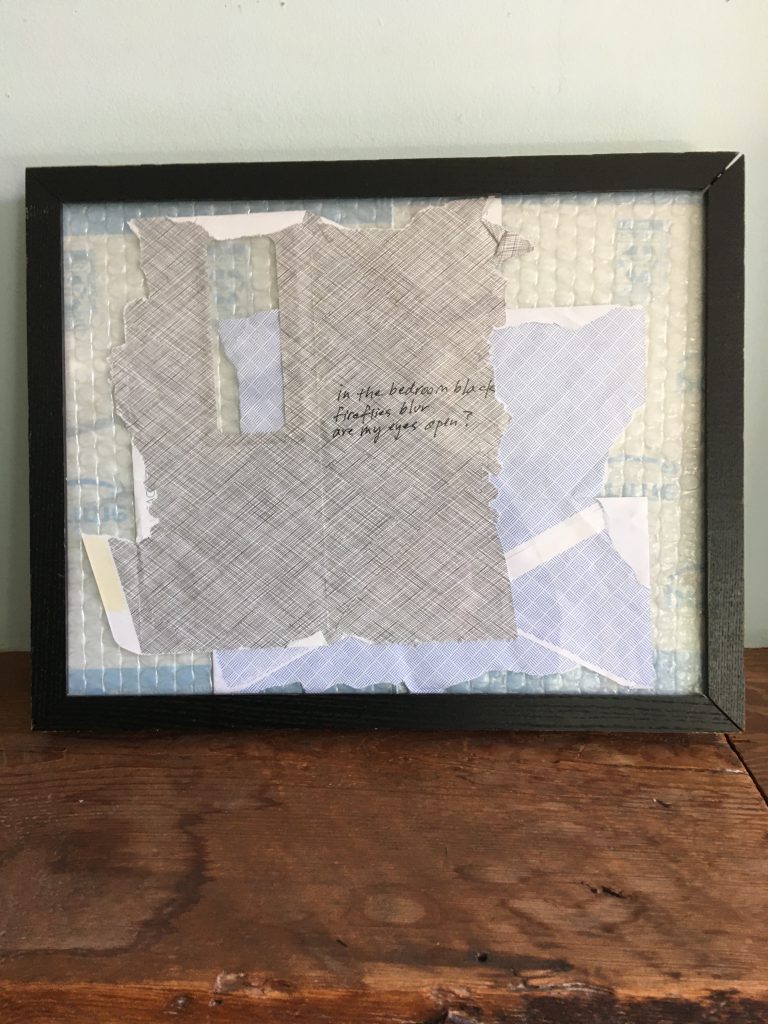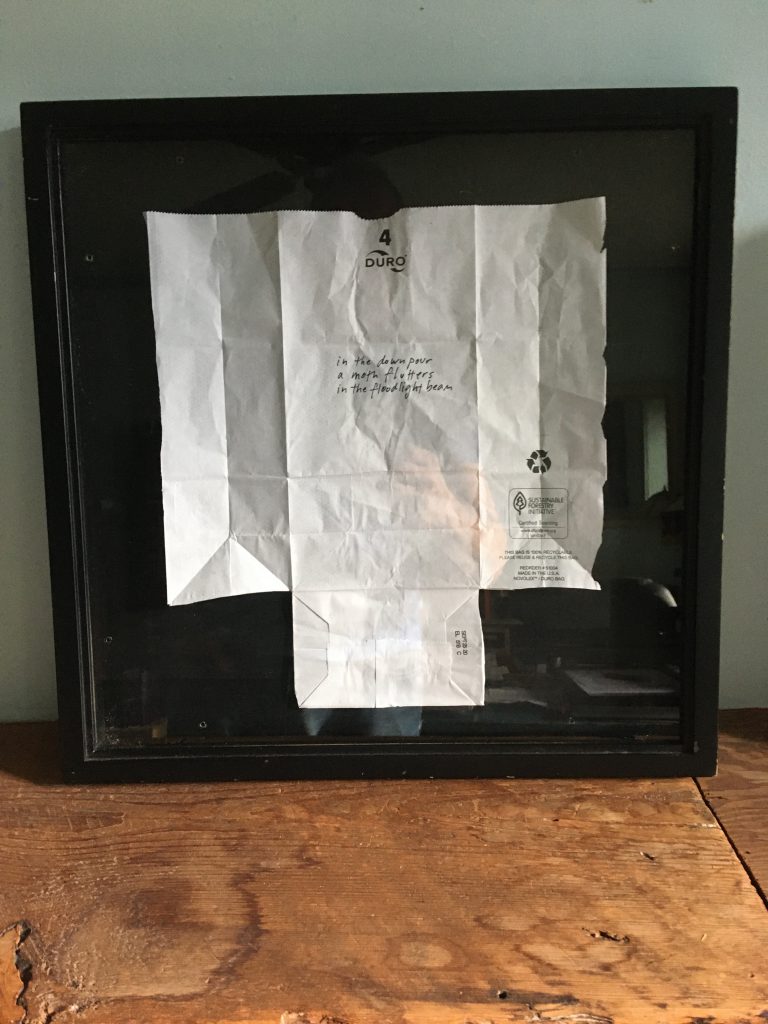I began collecting those multi-lingual instruction manuals from the packaging of iPhones and other electronics. It seemed such a thoughtless waste in the global consumer chain that so much design and production went into millions of these things that most people just threw away. I started making them into little single edition chapbooks of haiku, marrying the ephemeral nature of the ‘captured haiku moment’ with the disposability of the pamphlets. The hand-hewn quality was a nice counterpoint to the austere black-on-glossy-white industrial printing. I began to give them as gifts, accepting that they could be seen either as trivial and thrown out, or talismanic and saved; it didn’t matter. It was haiku.
As the stockpile of these little books grew, another collection began. I started noticing how many people threw away perfectly fine picture frames. Often the beloved item once deemed worthy of permanence and display was still under the glass. Wedding pictures, diplomas, magazine covers, ceremonies, sunsets, amateur paintings—-all were left out for free on stoops and curbs, on top of garbage piles or at dumps, sometimes at yard sales three for a dollar. I collected these out of the same impulse to extend the life of a manufactured object.
The two collections morphed into ‘Utter Garbage,’ a series of framed haiku constructed from repurposed trash. (One motherlode was a curbside cache of adhesive mailbox letters in front of a failed hardware store, where I gleaned dozens of iterations of the letter ‘H.’) My mandate was to use only discarded materials in the exaltation of these ephemeral moments, a kind of experiment in temporality vs. permanence. The poems were no longer on a page but on a wall, giving them what I hoped would be a kind of talismanic heft. I meekly started giving them to friends to see how they would fly, and they liked them. I was still unsure so I started an anonymous Instagram profile for them @justuttergarbage, and soon there were inquiries about buying them. So I relaxed. Maybe we are on the brink of post-industrialism.
You can see more at @justuttergarbage
